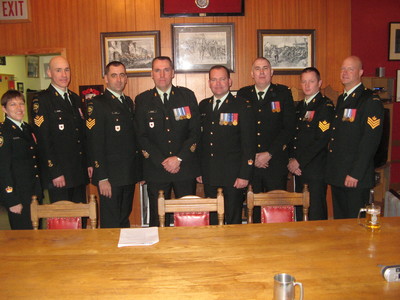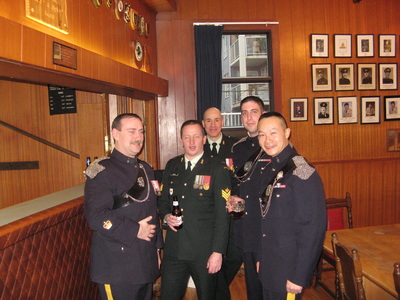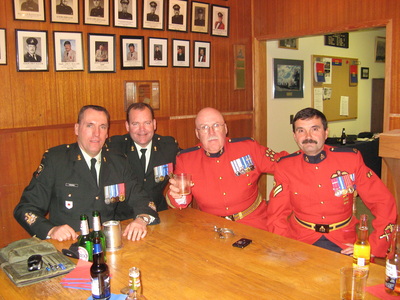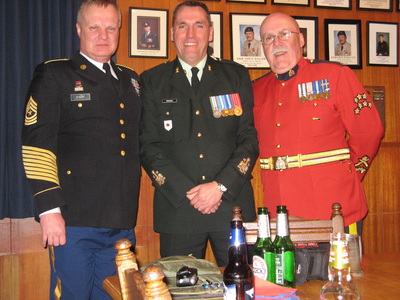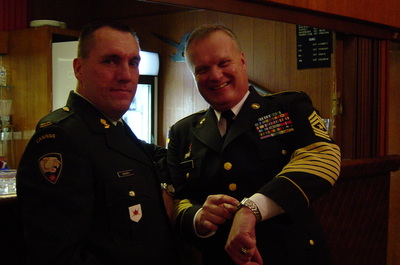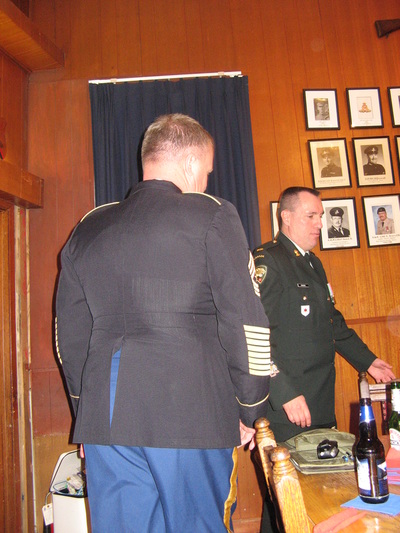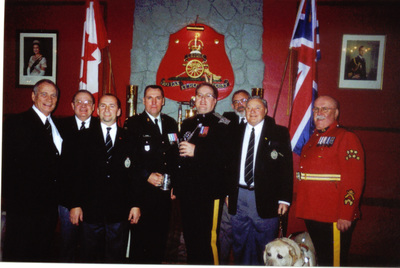New Year’s Day Levée
The annual New Year’s Day Levée, hosted by the Governor General, the Lieutenant Governor, military establishments, municipalities and other institutions, has an unusual and interesting origin.
The word Levée is derived from the French verb lever – to rise (specifically from one’s bed) – and has its origins in the Levée du Soleil or Rising of the Sun instituted by King Louis XIV (1643 – 1715) whose custom it was to receive his male subjects in the Royal bedchamber just after arising, a practice which subsequently spread throughout Europe.
The Levée crossed the English Channel in the 18th Century, and in Great Britain and Ireland became a formal Court assembly (reception) given by the Sovereign or his/her representative in the forenoon or early afternoon, at which only men were received.
In the New World colonies, the Levée was held by the Governor acting on behalf of the Monarch. Because settlers were widely scattered, and separated from the seat of Government, the annual Levée was a very important event, and attendance by village leaders and public dignitaries was compulsory.
It was in Canada that the Levée became associated with New Year’s Day. The holding of a Levée by the Governor General and Lieutenant Governors on New Year’s Day is not a continuation of the precedent set by the Sovereign they represent, but rather perpetuates an ancient custom of this country, dating from the days of the fur trade. The people of the trade traditionally paid their respects to their representative of government – the Master of the Fort – on New Year’s Day.
The first recorded Levée in Canada was held on January 1st, 1646 in the Château St. Louis by Charles Huault de Montmagny, Governor of New France (later Québec) from 1636 to 1648. In addition to shaking hands and wishing a Happy New Year to citizens presenting themselves at the Château, the Governor informed guests of significant events in the Mother Country, as well as the state of affairs within the colony. (This tradition is carried on today within The Commonwealth in the form of The Queen’s New Year’s Message. The State-of-the-Union address by the President of the United States, although not delivered on New Year’s Day, has similar origins.) In turn, the settlers were expected to pledge anew their allegiance to the Crown.
The Levée tradition was continued by British Colonial Governors in Canada, and subsequently by Governors General and Lieutenant Governors, and continues to the present day.
Although receptions hosted by the President of the United States of America are occasionally referred to as Levées, over the years, the Levée has become almost solely a Canadian observance.
The Lieutenant-Governor of Manitoba; http://www.manitobalg.ca/new-years-levee.php
The annual New Year’s Day Levée, hosted by the Governor General, the Lieutenant Governor, military establishments, municipalities and other institutions, has an unusual and interesting origin.
The word Levée is derived from the French verb lever – to rise (specifically from one’s bed) – and has its origins in the Levée du Soleil or Rising of the Sun instituted by King Louis XIV (1643 – 1715) whose custom it was to receive his male subjects in the Royal bedchamber just after arising, a practice which subsequently spread throughout Europe.
The Levée crossed the English Channel in the 18th Century, and in Great Britain and Ireland became a formal Court assembly (reception) given by the Sovereign or his/her representative in the forenoon or early afternoon, at which only men were received.
In the New World colonies, the Levée was held by the Governor acting on behalf of the Monarch. Because settlers were widely scattered, and separated from the seat of Government, the annual Levée was a very important event, and attendance by village leaders and public dignitaries was compulsory.
It was in Canada that the Levée became associated with New Year’s Day. The holding of a Levée by the Governor General and Lieutenant Governors on New Year’s Day is not a continuation of the precedent set by the Sovereign they represent, but rather perpetuates an ancient custom of this country, dating from the days of the fur trade. The people of the trade traditionally paid their respects to their representative of government – the Master of the Fort – on New Year’s Day.
The first recorded Levée in Canada was held on January 1st, 1646 in the Château St. Louis by Charles Huault de Montmagny, Governor of New France (later Québec) from 1636 to 1648. In addition to shaking hands and wishing a Happy New Year to citizens presenting themselves at the Château, the Governor informed guests of significant events in the Mother Country, as well as the state of affairs within the colony. (This tradition is carried on today within The Commonwealth in the form of The Queen’s New Year’s Message. The State-of-the-Union address by the President of the United States, although not delivered on New Year’s Day, has similar origins.) In turn, the settlers were expected to pledge anew their allegiance to the Crown.
The Levée tradition was continued by British Colonial Governors in Canada, and subsequently by Governors General and Lieutenant Governors, and continues to the present day.
Although receptions hosted by the President of the United States of America are occasionally referred to as Levées, over the years, the Levée has become almost solely a Canadian observance.
The Lieutenant-Governor of Manitoba; http://www.manitobalg.ca/new-years-levee.php
